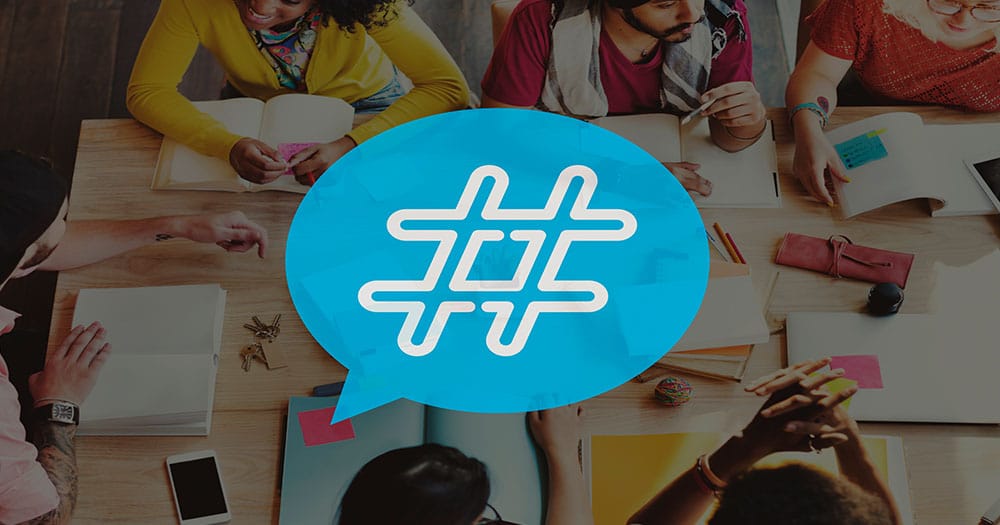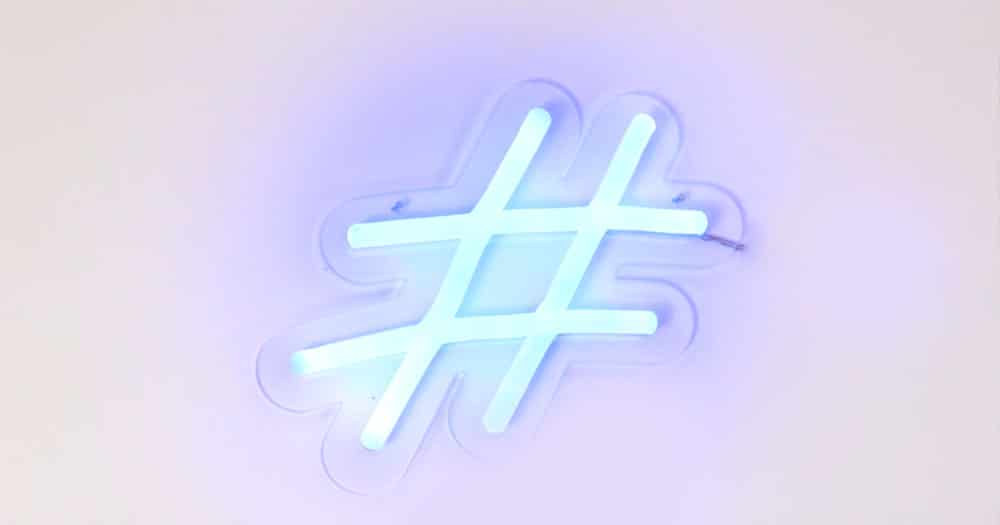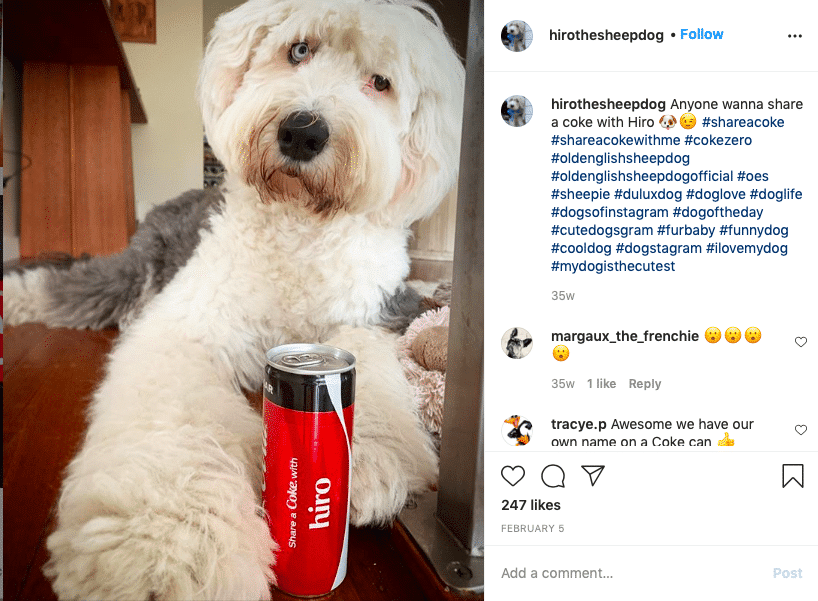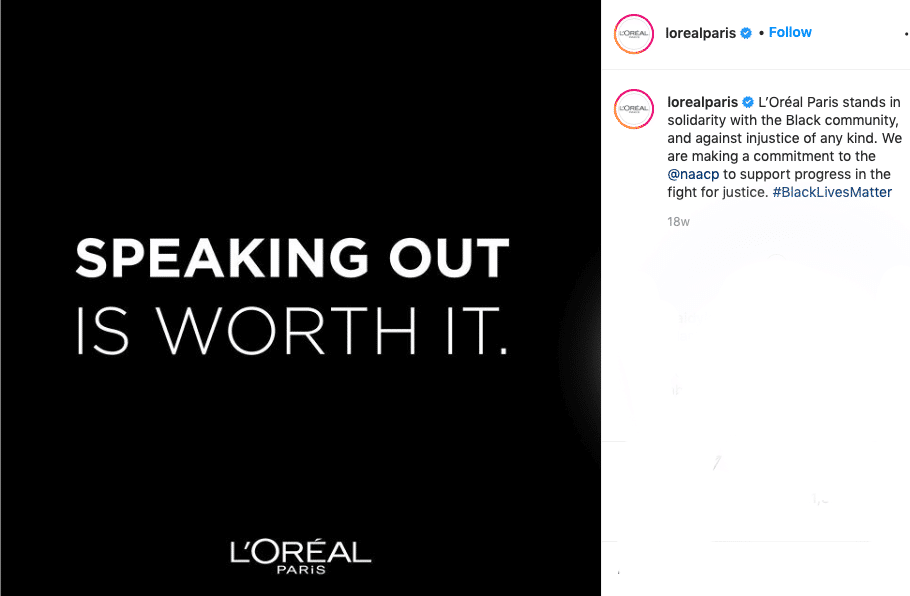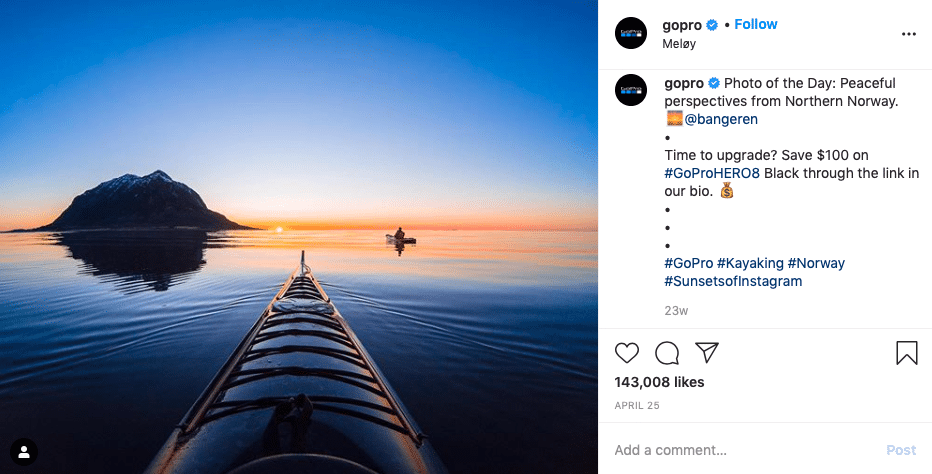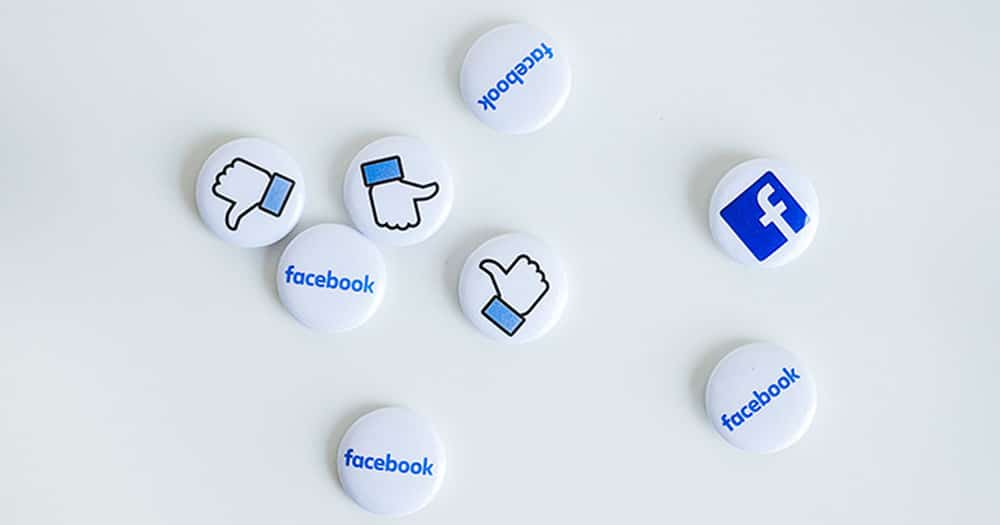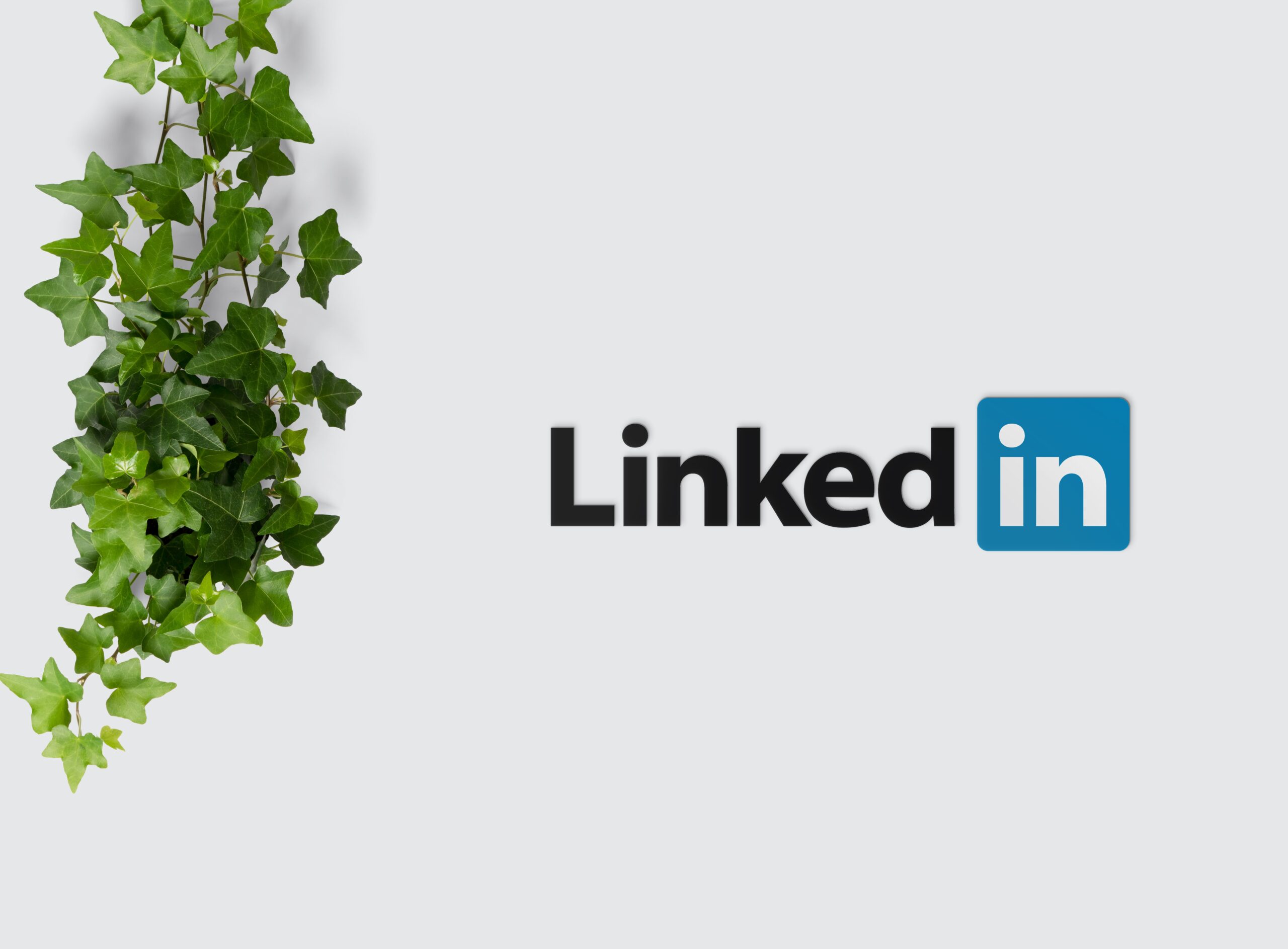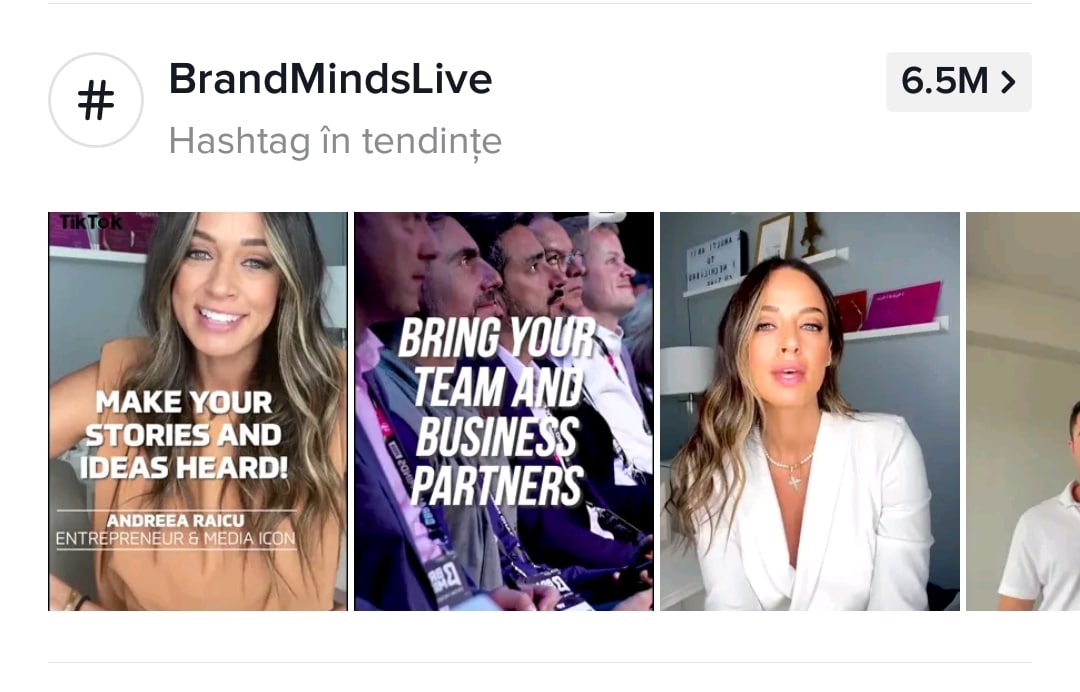The hashtag – How to increase your social media potential?
What is a hashtag and when is it appropriate to integrate it in our posts?
To use or not to use the hashtag?
How much value is actually hidden behind a simple hashtag?
Do we limit ourselves to using it only on Instagram?
…
These are just some of the questions that both business people and those who are constantly exploring the secrets of online marketing are asking themselves.
The hashtag – this element that has reached all the corners of Social Media – has become a real phenomenon, being integrated today in the communication strategy of many huge brands. Of course, like any precious tool, when used without a sustained strategy, it can entail a whole series of negative effects.
By reading this article, you will learn more about the symbol that has revolutionized and continues to revolutionize the way businesses communicate on social media. Specifically, you will find out:
- how to differentiate between a potentially lucrative hashtag and a string of #WordsPromisingToMakeYouInstagramFamous;
- where it is advisable to position it;
- how to adapt it according to the channel you want to promote;
- how to find those words that bring brand awareness, engagement and new customers.
But before the answers, let’s start with a question:
What is a hashtag?
Although in Romania, when you say “hashtag” you immediately think of Instagram, the symbol is a little “older” than his good friend, making its way into the vast landscape of the Internet in 2007, on Twitter.
Chris Messina, the founder of this phenomenon, was the one who, one day, burst into the office of Twitter and launched this idea: “What if you used # to group tweets depending on their subject?”. On August 23rd, 2007, his idea took shape, and for 13 years it has continued to evolve every day.
A hashtag is, therefore, a hyperlink that brings together under the same “umbrella” all social media posts corresponding to specific topics, events, discussions. You can consider it a key to a virtual library that opens new horizons of content, consumption, communication.
Rules:
Here are some conditions that each word/abbreviation must meet in order to become a hashtag:
- to use the # symbol
- to not include a space between the # and the word or between component words
Other important conditions to mention:
Avoid long hashtags! Instead, choose a short and memorable one.
Make sure you use a public profile! In order to be accessed by as wide an audience as possible, your post will need to be visible in the first place.
Limit the number of hashtags! Although you can include up to 30 in an Instagram post, it comes down to a few specific words, appropriate for the message you want to convey and the community you intend to address.
The advantages of using a hashtag
You increase the number of interactions organically
When you attach a hashtag to your post, you make it visible in a conversation, inevitably attracting more people interested in the topic you are approaching / the product you are marketing.
A clever trick you can use is to study your “competition” first. Access the hashtag that you are going to include in the post and notice how you can optimize your content so that it stands out in that conversation. Remember that although you are going to align yourself with a trend/conversation, you have to be original enough to be noticed in the crowd.
You reach your target audience more easily
The last few years have brought to social media the option to follow a hashtag. Just as you regularly receive posts from people you follow on social media, you can also do this for a hashtag conversation.
What does this mean for a brand? More visibility in the eyes of those who are already interested in the subject. Basically, we can say that the use of hashtags is an equivalent of the SEO process for social networks!
Brand awareness and increased virality potential
The dream of any Online Marketing specialist is to create viral content. The easiest way to turn a regular campaign into a viral one is to add a simple, memorable hashtag and add a “cool” challenge to it.
For example, do you remember #ShareaCoke, that Coca Cola campaign in which people posted on social media images with cans personalized with their names / the names of their relatives? It was considered the most successful campaign of the brand in recent years, going truly viral.
In a similar manner, you can also create a campaign for your brand. Of course, because your goal is, first of all, to make your name known, you can integrate the hashtag in a contest / promotion, and then adapt it in a creative challenge, without the need for a material stake.
You can easily measure your results
The success of a campaign like the one mentioned above will be easy to monitor with a hashtag. Basically, it generates an online database, organically, based on posts created by consumers. You will therefore have an important CGC (customer generated content) resource, which you can repost on the brand’s official page.
Moreover, for Instagram, business pages display statistics on the number of interactions generated by hashtags. This way, you can test more easily until you reach the series of really profitable expressions for your brand.
A PR move can start with a hashtag
Large companies frequently join strong social conversations such as #MeToo or #BlackLivesMatter, showing solidarity with certain causes. In the hands of a PR specialist, the hashtag can turn into a powerful tool for shaping the image of a brand.
Be careful, though! When we talk about PR in general, but also about CSR, you have to make sure that your brand is in complete harmony with the hashtag you support. If the brand generally promotes values contrary to the cause, it will never be able to join the movement, unless a rebranding is considered.
At the same time, a simple post expressing support is not enough. For the impact to be truly positive, the brand needs to come up with solutions to resolve the situation. We are not necessarily talking about large-scale measures. For a small company, changing its policy can be a valuable step.
How not to use a hashtag?
Many times, specialists describe how to use a tool, but they rarely warn you about the pitfalls:
A popular hashtag does not guarantee success
With a simple Google search you can find recommendations on the most popular hashtags depending on the domain / topic you are approaching. However, copy-pasting such a list in the description of your post does not always guarantee your success. On the contrary, we would say. Many of the formulas that promise to bring you popularity do nothing but bring you into a spam community. #likeforlike or #followme are some of the options to add to a brand’s MUST NOT list.
The right word, the wrong context
Not every hashtag leads you to the conversation it promises at first glance. Some words may be associated with movements or contexts in which your brand does not integrate. We go back to the same advice: Always check what is really hidden behind such a hyperlink before using it!
The more, the better?
Opinions are quite divided here. While some experts recommend using the maximum number of hashtags, others suggest that it is smarter for a brand to limit itself to using 3-5 such expressions. We will see, below, a formula of “perfection” in terms of engagement, proposed following the studies of the Smart Insights team.
Prioritize content over hashtags
To enjoy the benefits of a large number of hashtags without creating the impression of spam, you can implement a few tricks:
Hashtags in comments
If you want to stay relevant, but also elegant, you can choose to divide the hashtags between the description and the comments. Choose from the list 3-5 words / phrases that are really important for your post, and the rest post them separately, in a comment, immediately after you publish the post.
Hide hashtags in the description
If you want to put your creative text in the foreground without giving up the already famous list, you can hide it by placing between it and the description a few punctuation marks arranged vertically, as in the example below. This way, the hashtags will only be visible if the user clicks on See More.
If we talk about story posts, an interesting trick is to hide the hashtags behind other compositional elements such as GIFs or texts with background.
Instagram: Hashtag in description or hashtag in comments?
Ever since this trend of placing hashtags in comments was born, a new dilemma has activated marketing researchers: Which of the two options brings more value?
At first glance, the differences are not major. However, the team at Smart Insights seems to have found the ideal formula for getting maximum engagement, depending on the number of followers a brand has on Instagram:
- for pages with less than 5,000 followers: 5 hashtags in the description and 9 in the first comment;
- for pages with 5,000 to 10,000 followers: 5 hashtags in the description and 13 in the first comment;
- for pages with 10,000 to 50,000 followers: 2 hashtags in the description and 11 in the first comment;
- for pages with 50,000 to 100,000 followers: 8 hashtags in the description and 12 in the first comment;
- for pages with more than 100,000 followers: 6 hashtags in the description and 6 in the first comment.
However, this rule only applies to Instagram. But how do we use a hashtag on other social platforms: Facebook, LinkedIn, Twitter and, recently, TikTok?
The hashtag on Facebook
Optimal number: 1-2
When it comes to Facebook, we are dealing with a social network with mostly private content, which circulates in small communities, especially when we refer to consumers. That’s why Facebook is not a very friendly community with this symbol, being rather used within groups to organize content and discussion flow.
Do’s:
» Create a group to bring together a part of your consumer community. Give them exclusive information there, possibly even special offers. Use some key hashtags to organize your content so that it can be easily found by those interested.
» Uses hashtags with a role in branding. You can integrate in the Facebook posts a hashtag specific to a certain campaign or you can even turn your slogan into one to make it more easily imprinted in the consumer’s mind.
» Organize your content on the page. There are certain series of posts that you probably want to highlight. For example, when you create posts about your team members, you can add a #(BrandName)Team to the beginning of the post. In this way, the public will easily recognize the type of content and will be able to view the entire series just by simply accessing this hashtag.
Don’ts:
» Avoid long strings of hashtags.
» Avoid campaigns / contests in which it will be necessary to integrate a hashtag in consumer posts. Because many of them have a private account, the results / interactions will be difficult to quantify.
» Avoid, this time, general wording. Instead, focus on creating personalized hashtags that bring brand awareness.
The hashtag on LinkedIn
Optimal number: 1-2
The role of a hashtag on LinkedIn is similar to the one on Instagram or Twitter, with a general contribution to organizing content into categories. At the same time, because there is the option to track a hashtag, integrating these symbols into posts can increase the visibility of a business.
But, more than that, the hashtag makes it easier for a company to access a community, giving it the possibility of interacting business-to-business or business-to-customer. Any company page can follow a series of hashtags, and LinkedIn will notify you when someone else makes a post under the same keyword, encouraging dialogue and, of course, creating links / partnerships.
Do’s:
» Integrate hashtags into your LinkedIn posts. You can position them both at the end of the text and inside the text.
» Follow at least three hashtags relevant to the field you work in. They will give you the opportunity to interact with other specialists in the field and even with potential clients / partners.
» Create some branded hashtags to differentiate your post categories. It is ideal to create a LinkedIn strategy around a series of posts such as team presentation, advice, case studies based on your own projects, etc.
» Check the suggestion box provided by LinkedIn for hashtags. This way, you will always be able to discover new opportunities.
Don’ts:
» Do not use very specific expressions. If the variety of hashtags on Instagram is very large, here you should focus on using general notions that define the profession / field in which you work.
» Don’t crowd the text with hashtags! If LinkedIn doesn’t impose a restriction on the number of symbols used, it doesn’t mean you have to exaggerate. Summarize the choice of 1-2 representative words both for your field in general and for the direction of your post in particular.
» Avoid abbreviations and acronyms. If Instagram or Twitter are more friendly with such options, LinkedIn prefers long word variants. For example, instead of #SMM, it is advisable to use #SocialMediaMarketing.
The hashtag on YouTube, TikTok, Pinterest and Twitter
YouTube and TikTok are also two channels in continuous development in Romania, so we consider it necessary to talk about the hashtag in the context of the two.
In the case of Youtube, the hashtag can be integrated either in the title or in the description. It can generally be used when talking about classic categories of #DailyVlog videos, in an integrated Influencer Marketing campaign or by a brand / content creator to distinguish a few content sections.
TikTok is a hashtag-based channel. Each challenge launched at the global level has a specific one, and the most popular ones appear in the Discover section of the application. Although many brands are still struggling with preconceptions, there are companies that have already started moving their promotion here, creating some viral hashtags such as: #BrandMindsLive or #MixUpYourSummer (Mirinda).
Pinterest and Twitter are less talked about in our country, especially when we talk about online promotion techniques. If, however, there is potential for your business there, we encourage you to integrate the hashtag into your Social Media Marketing tools. Don’t forget to follow these tips: stay concise, relevant and personalize to generate brand awareness.
#Conclusion
The hashtag is therefore a valuable tool with a lot of potential. It is important, of course, to integrate it into a macro strategy and to remain constant, regardless of the chosen Social Media channels.
Our advice? Treat it as an equivalent of Search Engine Optimization, applied, of course, to social networks. Always keep in mind the intent and formula of the potential customer search and use hashtags that take you directly to them!
If the similarity between the hashtag and SEO is still not very clear to you, we invite you to read more about optimization in the article » What is SEO?.
And if you need a successful strategy, customized according to your needs, our experts are always at your disposal with the best advice. All you have to do is apply for a free consultation by filling out the online form!





